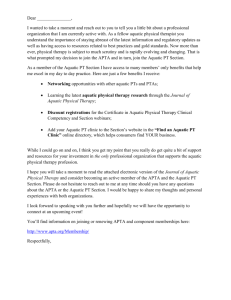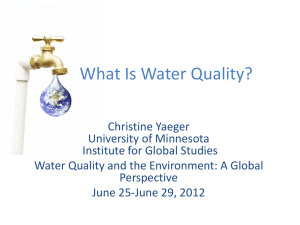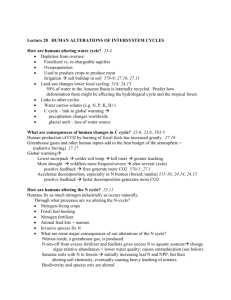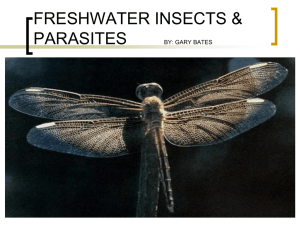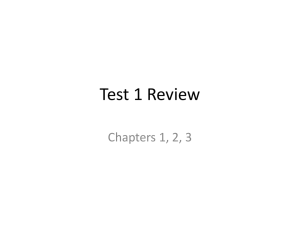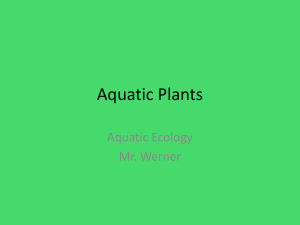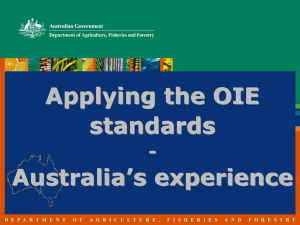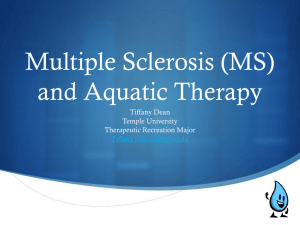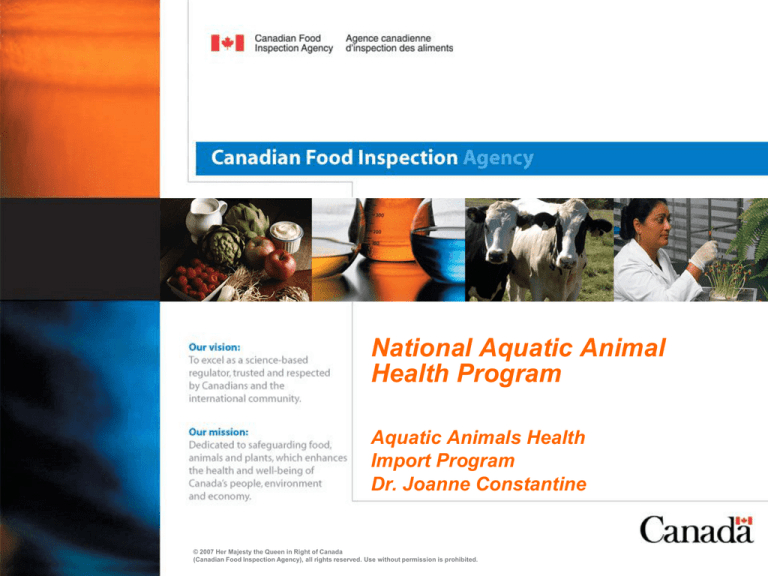
National Aquatic Animal
Health Program
Aquatic Animals Health
Import Program
Dr. Joanne Constantine
© 2007 Her Majesty the Queen in Right of Canada
(Canadian Food Inspection Agency), all rights reserved. Use without permission is prohibited.
Amended Health of Animals Regulations,
(Section XVI 190 – 200 and 160 (permits) &
Reportable Disease Regulations
• Amendments completed December 10, 2010
http://www.inspection.gc.ca/english/reg/approe.shtml
Or
http://www.inspection.gc.ca/english/anima/aqua/aquae.shtml
• Canada’s regulations for control of animal
diseases now includes aquatic animals
• Regulatory framework is now consistent with
international standards
• World Animals Health Organization (OIE)
AND
• International obligations
• – World Trade Organization SPS Agreement
Objectives
1. Prevent introduction into and spread
within Canada of aquatic animal diseases
2. Ensure healthy and sustainable aquatic
resources
Amended Health of Animals Regulations,
(Section XVI 190 – 200 and 160 (permits)) &
Reportable Diseases Regulations
Three main activities:
1. Mandatory notification of Reportable and Notifiable
diseases
•
Schedule VII and VIII of H of A Regulations and
Reportable Diseases Regulations
2. Control import (permits) for aquatic animals
susceptible to regulated diseases
•
Schedule III in Health of Animals Regulations
3. Control animal movement within Canada
•
Domestic permits and zonation
Import Controls:
Who will need a
permit?
Health of Animals Regulations
Schedule III -Susceptible Aquatic Animals
• Aquatic animals are regulated –
• defined as finfish/molluscs/crustaceans
• Schedule III – susceptible aquatic animals
• only those aquatic animals affected by diseases listed as
reportable and immediately notifiable
• List of animals is based on evidence of susceptibility
to the CFIA regulated diseases
• Diseases listed based on OIE code and others
endemic to Canada
Schedule III - Animals Requiring Permits
1. Live susceptible aquatic animals (fish, molluscs,
crustaceans) and their germplasm
2. Finfish, crustacean and mollusc carcasses, part of a
carcass or offal when the end use will be:
1. Bait
2. Feed for aquatic animals/Feeding to aquatic animals
3. Research
4. Diagnosis and testing
5. Any purpose that will produce effluent or offal
•
This includes processing
NB * 5. Does not apply for products eviscerated, or ready to eat,
packaged products
Industries and Sectors:
Permits in December 2011
• Aquaculture
• Baitfish
• Feed Manufacturers
• Processors of Fish and Seafood
• Live Fish Importers
• Ornamental and Aquarium Industries
• Research Institutions
• Diagnostic Labs
Import Requirements
• Aquatic animals will need to be declared and
information provided to CBSA upon border arrival
• 405 aquatic animal species (Schedule III) will
need permits and/or export certificates
• CFIA will be modifying the HS_OGD codes to
include taxonomic names of the regulated animals
and new end uses
Exemptions
• Specific fish on the SSL -verify they are “pets”
• Personal use (e.g. taxidermy, food consumption,
sport caught fish)
• 4 crustaceans, 3 kgs. Molluscs, 10 fish not eviscerated
CFIA Import and Permitting Process
Step 1 – Pre-Import Request
•Import permit application form
will be available on the web
• Permit applications need to be
submitted prior to import
• Permits can be flexible – multi
species, time limited, multientry etc
• Permit type depends upon the
risk (Origin x End use)
Step 2 Application Process
Permit information
requirements include:
Consignor
Consignee
Species Taxonomic Name
Destination
Origin
Intended End Use of product
Permits are issued as signed
documents but not validated
until conditions are met
Step 3 - Importer Responsibilities
Permit contain:
1.Specific Importer instructions
and requirements
2. Export conditions and animal
health or “zoosanitary”
conditions
•Zoosanitary certificates signed
by Competent Authority in
foreign country will need to
accompany imports
•CFIA negotiating with the
countries in advance of Dec
2011
Step 4 Verification Process
•Paper work is submitted
electronically to CBSA and
reviewed by CFIA
•There are pre-notification and
approval processes to facilitate
import (e.g. PARS)
•For commodities permit
approval can be done in
advance if no inspection at the
border is required
•Inspection requirements
depend on the risk
(Origin x Species x End Use)
Step 5 - Validation and Decision
•For live animals and high risk
end uses inspections will be
required
•Inspections must be pre
arranged
• Can occur in quarantine
circumstance, post entry into
Canada
•Licenses for movement are
required for latter
So in December 2011…
Imports of aquatic animals listed in Schedule
III will need either an:
1. Aquatic Animal Health Import permit
2. Zoosanitary certificate signed by Competent
Authority of the origin of the animals
Thank you!
Questions?

